This is great that we can replant grocery store produce in our home garden. Thyme is one of those plants which can be grown from grocery store produce.
Thyme produces robust and flavourful leaflets with woody stems. It is a perennial plant. The taste of causes and soups becomes incredible when you add thyme. The green thyme will add charm to your kitchen garden.
CAN THYME CAN BE GROWN FROM A GROCERY STORE?
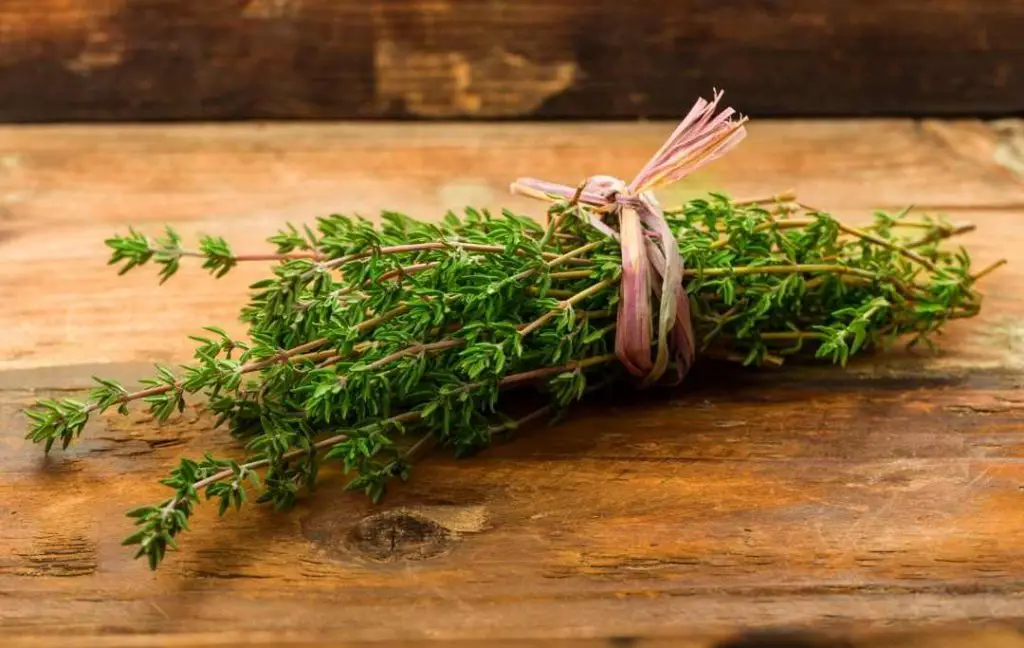
Thyme has been used for medicinal, culinary, and spiritual purposes. It is a perennial plant that returns to your planting area year after year. Thyme can be grown by seeds or get a different experience by propagating it from cuttings which you buy from grocery stores.
When you grow thyme from grocery store produce then it is simply called propagating of thyme. Propagating means producing the same plant which is identical to the mother plant.
It is not possible to propagate every plant but if we talk about thyme you can propagate it from cuttings these cuttings can also get from the grocery store.
It is best to grow herbs from the grocery store because it is a faster way of growing. The herbs which you grow from seeds take time to germinate. If you are facing the problem of less space, then you can also grow herbs in water and all-year-round favorite herbs are in your reach.
The best place for getting the cuttings of thyme is a grocery store and you will get an endless and cheap supply of thyme by growing thyme at home.
DIFFERENT VARIETIES OF THYME
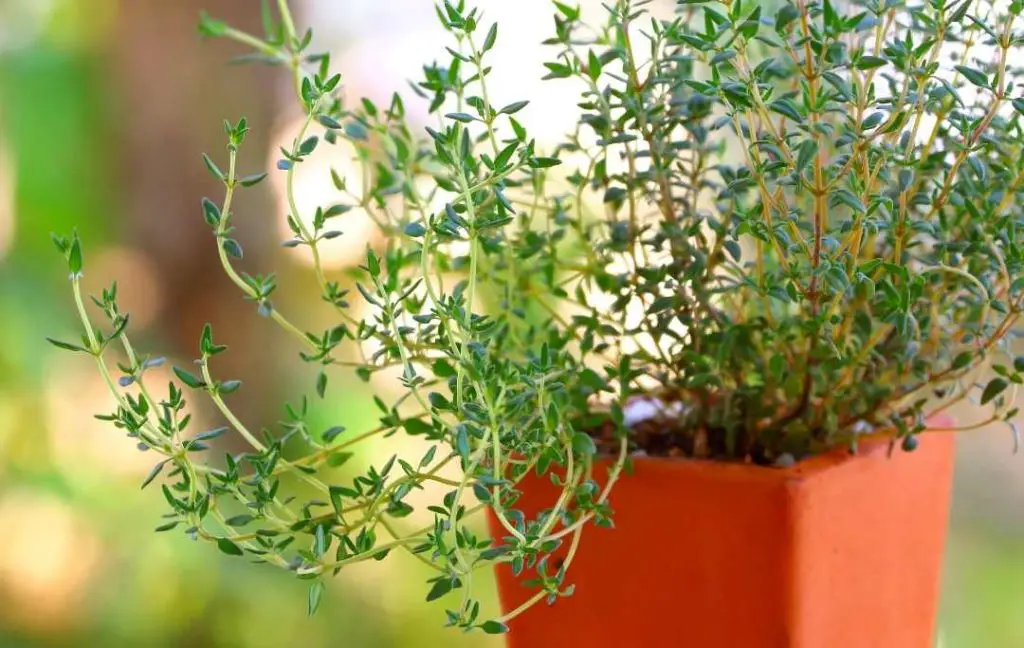
You can grow thyme anytime in the year. You will find 300 varieties of thyme in the world. The harvesting time of thyme leaves is before and after blooming. Some of the most common thymes varieties are
GERMAN WINTER THYME
German winter thyme is famous for its classic culinary flavor. The small green leaves of this type of thyme are not hardy.
THE CITRUS-SCENTED THYMES
There are three types of citrus thyme are orange, lemon, and lime. All the types of citrus thyme are different from each other. Lime thyme has a distinct flavor of lime and the color of the foliage is light green.
On the other hand, orange thyme has an orange flavor and small green leaves. When lemon thyme leaves are crushed they give you lemon crunchy flavor. You can make a great herbal tea by using all these types of citrus thyme.
TRANSPARENT YELLOW
You can use this variety for ornamental as well as culinary purposes.
SILVER EDGE
This variety is normally used for ornamental purposes but you can also eat it. The beautiful leaves are small and green. The edges of leaves are white and enhance the beauty of your garden.
FRENCH
French thyme has a true classic taste and you can maintain it easily. Easy to grow features make it perfect for beginners.The beautiful long aromatic stems which you can harvest easily. The color of the leaves is dark green which will soothe your eyes when you grow in your garden or indoor.
WOOLY
This variety is very terrific because it adds a unique texture to the garden. This type spread like carpet due to its stay very low to the ground.
FOXLEY
The broad leaves of this variety are found in white and cream with a soft texture. The beautiful flowers are found in purple color. You can use this variety for both edible and ornamental purposes.
HOW TO GROW THYME FROM CUTTINGS WHICH YOU BOUGHT FROM A GROCERY STORE?
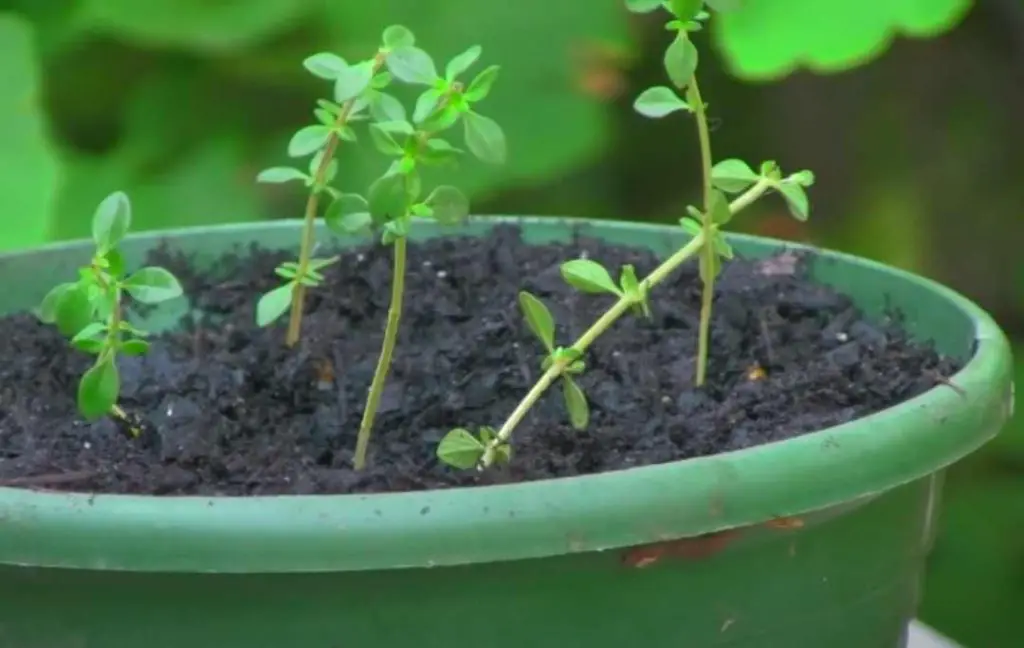
You can grow thyme from seeds but it is a very tough method of growing due to uneven germination. The thyme which you buy from the store can be used for this propagation purpose.
THINGS YOU NEED
Following things are needed for growing thyme.
- A small pot of 3 inches. Make sure the pot has drainage holes.
- Rooting hormone
- Potting soil mix
- Thyme cuttings from the grocery store
STEP 1: SELECT THYME FOR PLANTING
The first step is selecting the healthy and younger branches of thyme. The woody branches of thyme should be avoided for planting and. The size of the branch should be 6 inches long. When you grow plants from cuttings they will produce plants identical to their mother plants.
STEP 2: STRIP LEAVES OFF AT THE BOTTOM OF THE THYME SPRIG
Now at this step, strip off the leaves at the bottom part of the stem. This will encourage the growth of roots. When you remove all the bottom leaves from the leaves. Now cut the tip of the sprig at a 45-degree angle. This cut will help for the propagation of the plant.
STEP 3: DIP THE GROWTH HORMONE INTO THE STEM
If you want to fast the process of emerging roots from the branches then sip the bare stem into rooting hormone. But this step is optional, you can skip it. The growth hormone is easily available at the garden center.
STEP 4: START THE ROOT STRUCTURE
Now take the pot and fill it with a high-quality potting soil mix. Make sure your pot has drainage holes for the healthy growth of the plant. As the size of the branches at this point is very small so you can use a small pot for starting the root structure of branches.
When the roots emerge then you can move the plant to the big container or pot according to the need. Now place all the branches in the soil very gently.
Give some water so the branches establish themselves in a new environment. Place the pot indoors so you will prevent plants from the last frost. The best time for a head starts indoors before the last spring frost.
If you are not using growth hormone then you can also place the thyme plant in a glass of water, this will encourage the growth of roots. The sprouting time of roots is about three to four weeks. Within 6 to 8 weeks you will see the growth of branches.
STEP 5: TRANSPLANTING
- When you see the height of the young thyme plants reach a height of 12 inches then you can transplant them to the permanent place in your garden.
- Choose the best location for your plants where they get full sun exposure for robust growth.
- The soil should be well-drained because the thyme plants don’t like wet soil.
- If you are planning to transplant the branches in the soil of the ground of the garden. The temperature of the soil should be 70 to 80 degree Fahrenheit.
Read More
- How To Build A Vertical Herb Garden
- How To Build A Raised Bed Herb Garden
- Herbs That Grow Well Together – Herbs Companion Planting
HOW TO CARE FOR THYME PLANT?
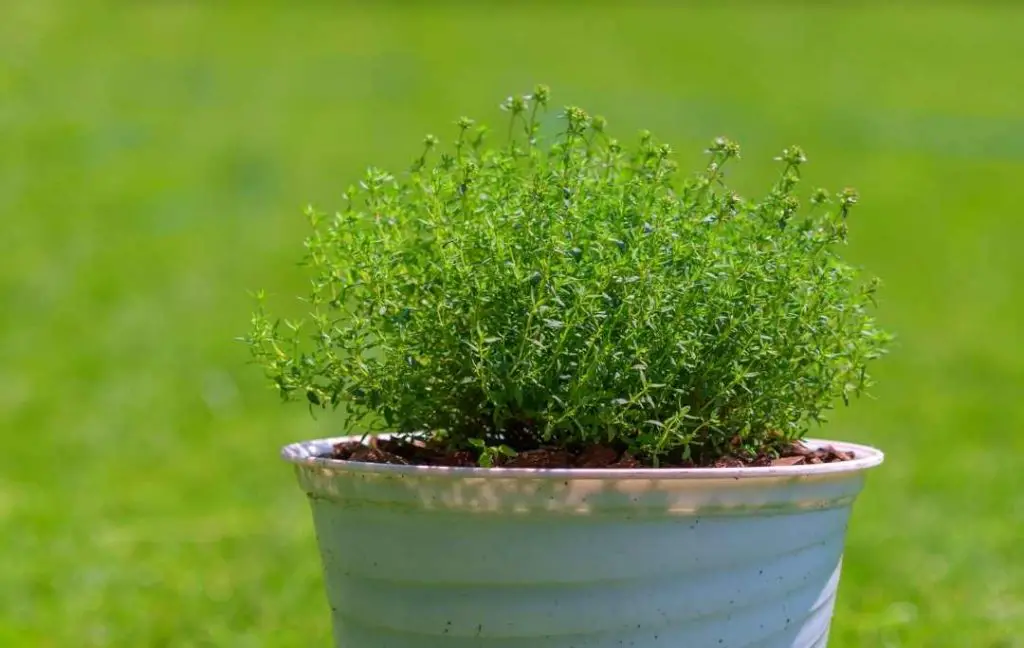
- When you see the soil is completely dry then water the thyme plant. You can check the soil with the help of a finger. This is a simple way of checking the moisture of the soil. Deepwater is suggested for the plants.
- Prune the thyme plants because it will encourage new growth of the plant.
In cold winters, spread a layer of mulch around the plant so it will keep the soil warm and retain the moisture. Weeds are unwanted plants that steal nutrients from the soil and as a result, plants have to compete for their needs.
Competition of nutrients between the thyme plants and weeds is not good for healthy growth. When the plants become 3 to 4 years old then replace them and grow new plants. The leaves of old plants become less flavourful.
COMMON INSECTS
The following insects and diseases are a danger for your thyme plants.
APHIDS
These are small insects which are found in white, brown, and black color. These insects gather the underside of the leaves. They also like to sit on the tips of the stems. They suck the juice of the leaves which makes the plants weaken. Their saliva is the main reason for spreading disease.
If you want to get rid of these little insects, then gently scrub with one part of the alcohol and one part of the water using a cloth. After that use spray of insecticidal soap and neem oil. This hack is very effective against aphids.
SPIDER MITES
If you see web covering on the stems or leaves, it means your thyme plants are affected by spider mites. Like aphids, they also suck the juice from the plant.
The hacks which told you earlier for controlling aphids can be applied to spider mites too. Keep monitoring your plants so you can take a step at the right time and prevent your plants from these tiny pests.
COMMON DISEASES
The fungal diseases which affect the thyme plants are botrytis rot, root rot, and alternative blight. The reasons for spreading the above diseases are warm and damp conditions.
TIPS FOR PREVENTING YOUR PLANTS FROM FUNGAL DISEASES
The following tips are the same for all fungal diseases.
- Keep an eye on your plants and whenever you see any affected part then remove it from the plant by using a sharp scissor.
- You should use stakes if needed for your plants. They will help your plants to keep upright. Pruning is also important to stop the excessive growth of your plants.
- Avoid watering on the leaves. Water at the base of the plants.
- Mulch is very important, it will prevent fungal spores in the soil.
HOW TO HARVEST THYME?
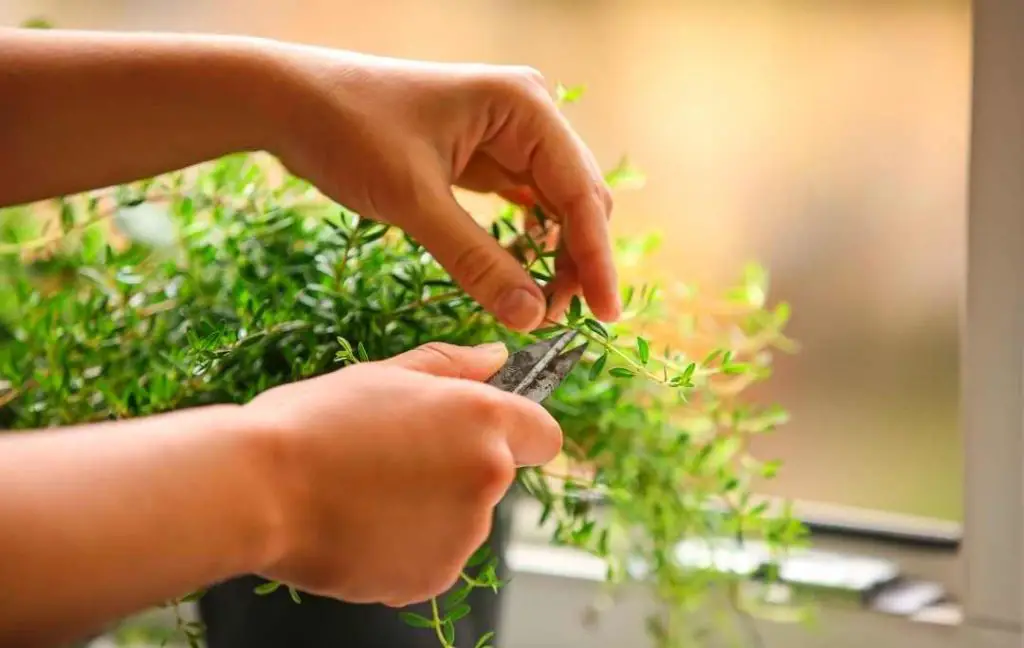
Here are some tips and instructions which you should follow during the harvest process.
- You should leave the woody part of the thyme. You can cut off 5 to 6 inches of the plant leaving the lower part of the woody stem.
- The best time of day for harvesting thyme is morning. All the essential oils are removed so there is no favorite to wash the clean leaves of thyme.
- Trimming is the key to the continuous growth of thyme. You should leave 5 inches of the plant so it will produce endless thyme. The best time of trimming is when your thyme plants get leggy.
HOW TO STORE?
You can store the fresh thyme in the refrigerator but first,t remove all the yellow or rotten leaves from the plant and wrap them in plastic. Use thyme within one to two weeks.
You can also use thyme in dry form. For this purpose hang the sprigs in the dark and ventilated place. Remember the area where you hang the sprigs of thyme should be warm.
When you see the leaves are dried, then keep them in an airtight jar or container for future use. Whenever you need them, crush the leaves before using them.
If you provide all the basic conditions to your favorite herb then it will retain maximum flavor for a long time. You can also freeze thyme, it is another method of storage.
Read More
